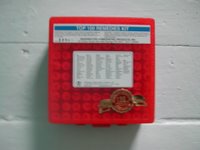I am reading the "bible" of homeopathy, "Organon of the medical art" by Samuel Hahnemann. It consists of a series of 291 Aphorisms. Like Jews read the Torah once through every year, it is suggested that homeopaths read this "bible" once a year.
I'll outline the aphorisms below (at least the ones I'm supposed to read for the month of October):
1. The physician's only job is to make the sick healthy.
2. A cure should be rapid, gentle, and permanent.
3. To cure, the physician must understand the disease, understand the medicine, select the right medicine and give it properly and remove obstacles to recovery.
4. The physician must know what disturbs health and maintains disease and be able to remove them from healthy people.
5. The physician should attempt to discern the "occasion" of an acute disease and the most significant factors of a chronic disease, taking into account constitution, character, occupation, lifestyle, relationships, age, activities. "The fundamental cause of a protracted wasting sickness mostly rests upon a chronic miasm"
6. The disease is represented by perceptible signs.
7. The totality of symptoms = the outwardly reflected image of the inner wesen of the disease=the suffering of the life force; this points to the medicine
8. When the totality of sx is removed, health remains (disease is not a material thing; it is a disturbance of the life force.
9. In health, a spirit-like life force "enlivens" an individual; the rational spirit is free to use the self as an instrument to achieve higher purpose of existence
10. The material organism can't do anything without the "immaterial wesen" or life force
11. Illness results from "mistuning" of the life force (through a "morbific agent inimical to life", leading to irregular functioning and symptoms
12. When illness is cured, the "integrity" of the life force is restored and the symptoms disappear
13. Disease is NOT an "inwardly hidden wesen separate from the living whole"
14. Everything that is "curably diseased" expresses perceptible symptoms
15. The material organism + life force = the unity of the individual; these are inseperable but we separate them conceptually for purposes of discussion.
16. Only the spirit-like can affect the spirit-like life force to cause disease, and only spirit-like medicines can be used to cure it.
17. Curative medicines will take away the entire symptom complex of disease (ie the totality of the disease or the disease itself since not separable); the only goal of the physician is to do this.
18. The totality of disease is the only indicator of the choice of remedy.
19. Medicines work by "differently tuning" the human condition.
20. The "hidden spirit-like power in the inner wesen of medicines" is only discernable through its manifestations while "impinging on the human condition"
21. The only knowledge we can obtain about medicines is through the ways in which they "differently tune" a healthy person; this "disease-engendering power" = the "disease-curing power" of each medicine.
22. Medicines cure by causing an "artificial disease state" which "lifts and eradicates" the symptoms already present and should be chosen based on the totality of sx present in the patient.
23. If a medicine causing symtoms "opposite" to the disease symptoms are used, this may cause short-acting palliation, but not permanent cure ("antipathic, enantiopathic, or palliative method")
24. Only the homeopathic method is promising against disease.
25. Medicines cure those diseases whose symptoms resemble their own.
26. homeopathic natural law: "In the living organism, a weaker dynamic affection is permanently extinguished by a stronger on, if the stronger one is very similar to the weaker one in its manifestations"
27. Medicines should therefore have similar symptoms but stronger power than disease.
28. This can and has been shown empirically; it does not matter how it works.
29. The mechanism is as follows: 1) disease mistunes life force 2) homeopathic cure "seizes" life force 3) stronger medicine extinguishes weaker disease and life-force is "occupied soley" by artifical "disease-affection" 4) the artificial "disease-affection" plays itself out, the patient is "free and recuperated", and can continue life in health
30. The body allows itself to be more "effectively altered in its tuning" by medcines than by natural disease irritants, partly because the dose adjustment is controlled by the physician
31. Diseases do not have "absolute power" to "morbidly mistune" the human condition; the organism must be "exactly and sufficiently disposed and laid open to be assailed by the cause of disease that is present"
32. Medicines (ie--"artificial disease potencies") do have absolute power; peculiar sx will be distinctly conspicuous if the dose is large enough
33. 31 and 32 above have been shown by experience.
34. For a medicine to work it must be 1) given in the correct dose and 2) must be "capable of causing an articicial disease similar as possible to the disease to be cured"

